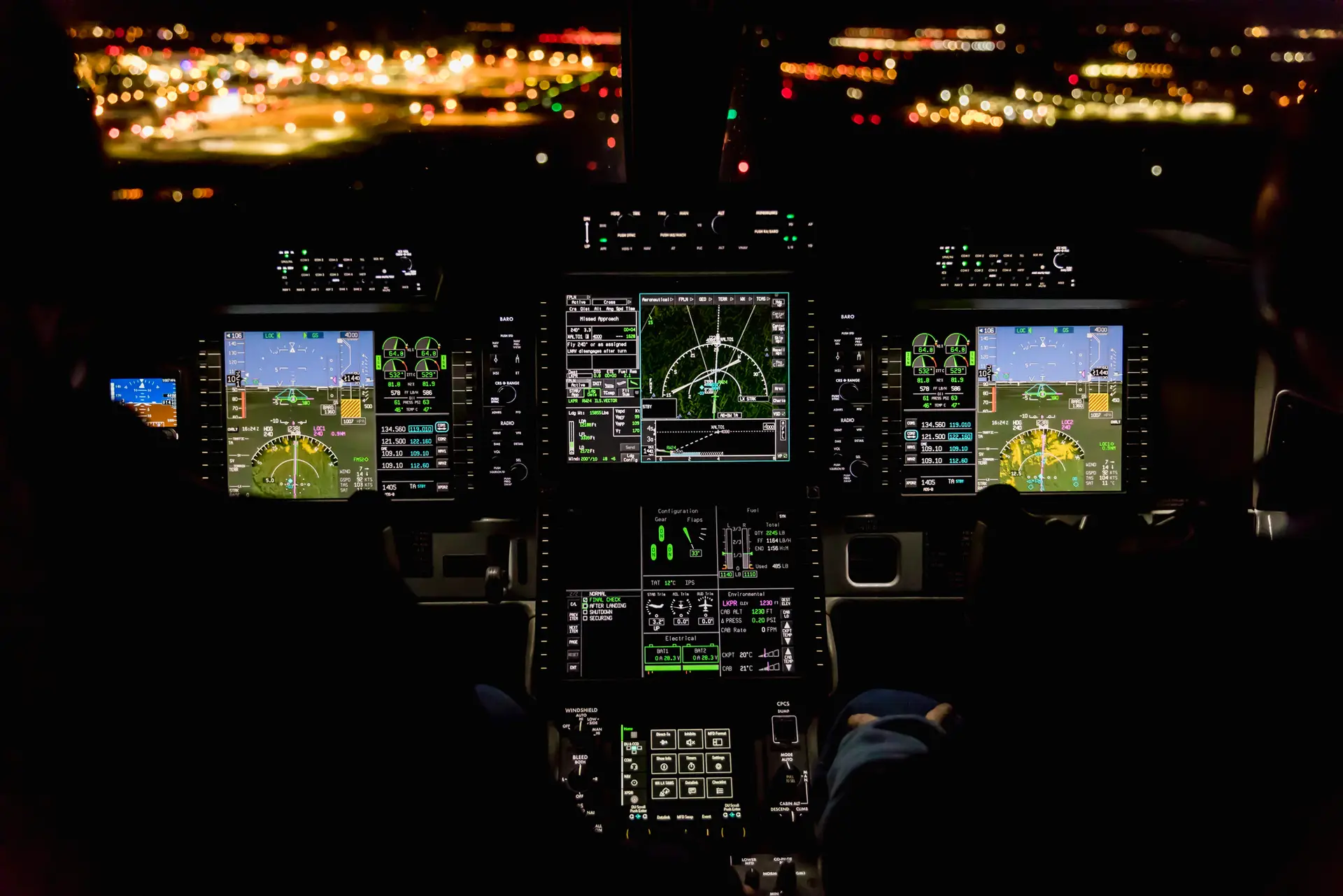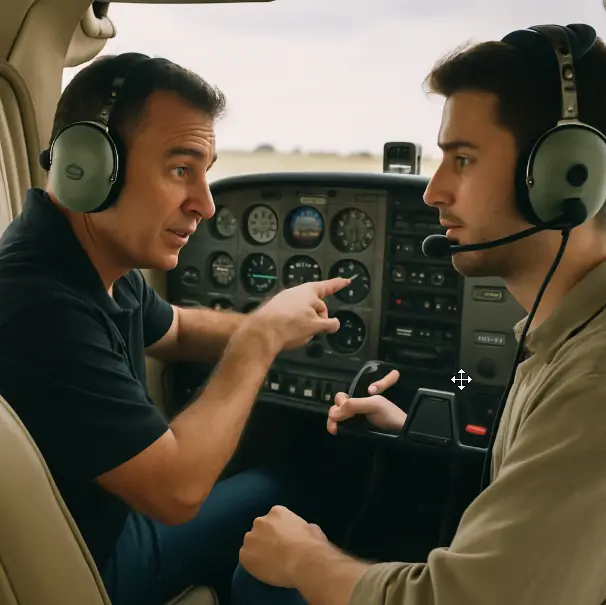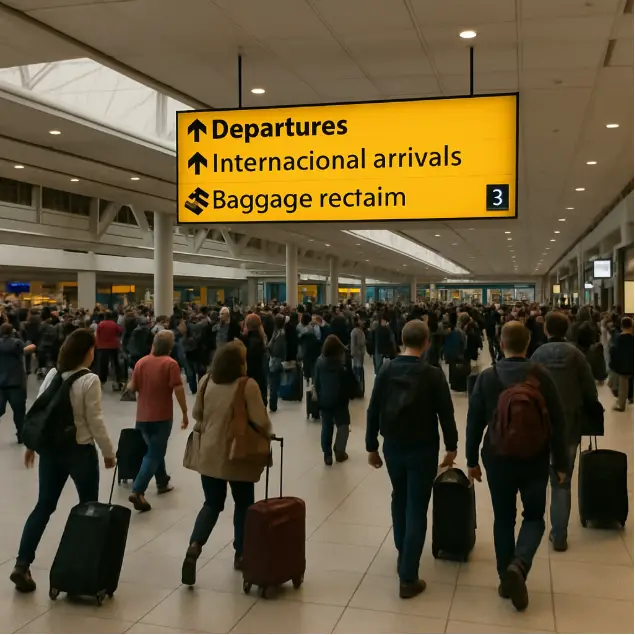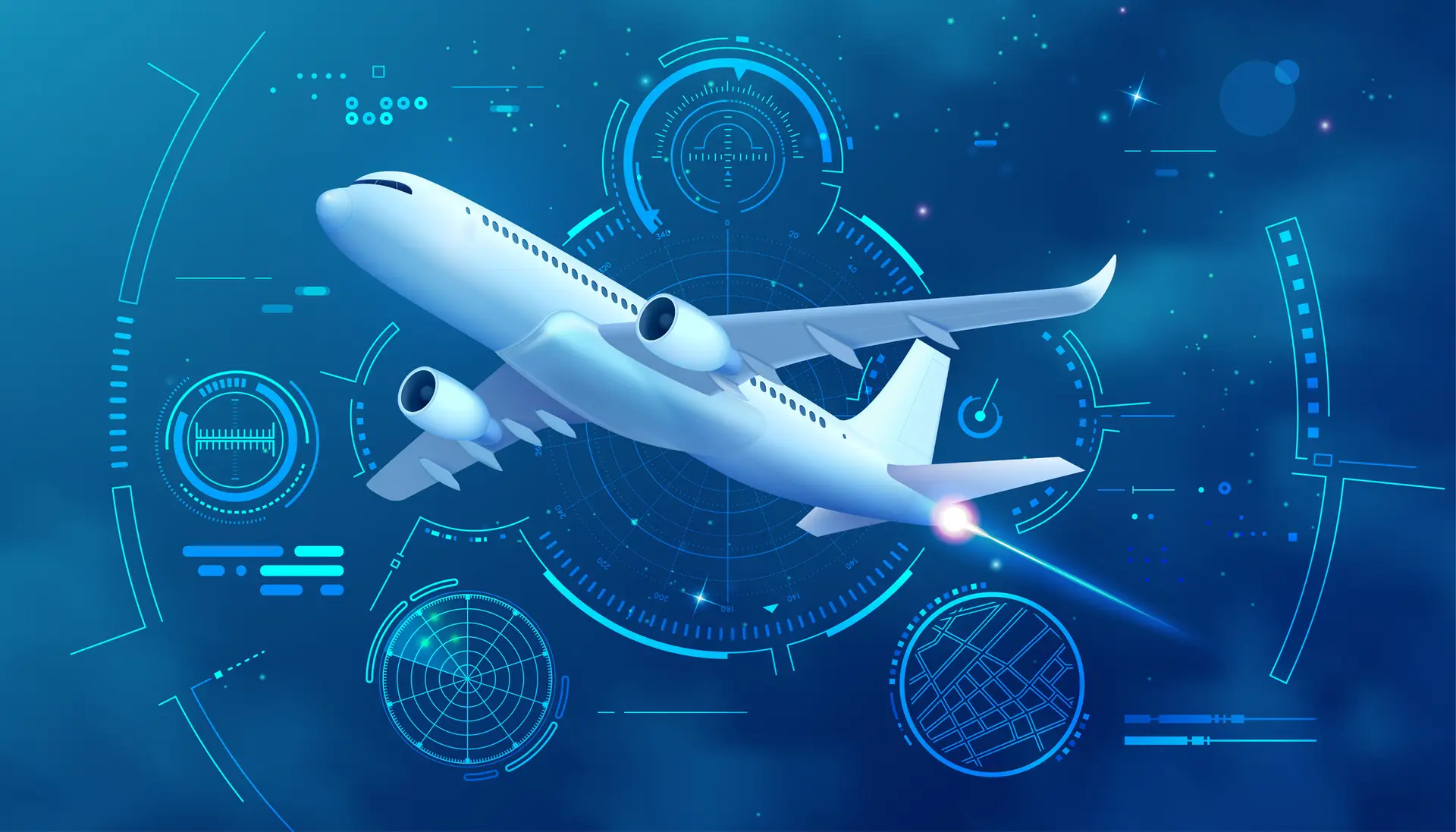Night Flying Tips for Private Pilots: Boost Safety & Confidence

- aviatorpro_6714
Flying at night can be a thrilling experience for private pilots. The sky takes on a whole new appearance, with stars twinkling and city lights glowing below. However, night flying also comes with its own set of challenges and requires specific skills and preparations to ensure safety. In this guide, we’ll cover essential night flying tips for private pilots that will help build your confidence and keep you safe in the skies after sundown.
Night flying is not just about piloting an aircraft in the dark. It involves dealing with reduced visibility, altered depth perception, and the need for heightened awareness and preparation. Let’s delve deeper into the challenges you might encounter:
Flying at night means you won’t have the same visual references that you do during the day. The horizon can be difficult to distinguish, and clouds can be hard to spot. This makes it crucial to rely on your instruments more than you might during daytime flights.
Moreover, the lack of ambient light can make it difficult to see other aircraft or obstacles. Spotting traffic and avoiding potential collisions require continuous scanning of the skies and relying heavily on your aircraft’s lights and instruments.
Without daylight, your depth perception can be altered significantly. Judging distances, especially during critical phases like landing, becomes challenging. Runway lights and other visual cues are vital but can be misleading if you’re not accustomed to them.
Pilots must learn to trust their instruments more than their instincts at night. Depth perception can also be affected by atmospheric conditions such as haze or fog, which are more difficult to detect in the dark.
Flying at night can be more tiring than daytime flying. Your body’s natural circadian rhythms might make you feel drowsy, so it’s important to be well-rested before you take off.
The monotony of a dark cockpit and the constant focus required can exacerbate fatigue. It’s crucial to recognize signs of fatigue early and take measures such as breaks or caffeine to stay alert.
Night flying can induce a sense of isolation and anxiety, especially for less experienced pilots. The vast darkness outside can feel overwhelming and may heighten stress levels.
Building confidence through gradual exposure and understanding the psychological aspects can help mitigate these feelings. Practicing mindfulness and stress management techniques can also be beneficial.
Preparation is key to a successful night flight. Here are some steps to take before you hit the skies:
- Check the Weather: Weather conditions can change quickly at night. Make sure to get a detailed weather briefing before your flight. Pay attention to wind speeds, cloud cover, and potential storms, which can be harder to detect at night.
- Plan Your Route: Familiarize yourself with your route, including any potential alternate airports in case of an emergency. Use your GPS and other navigation tools to track your progress. Consider the availability of lighting at alternate airports.
- Inspect Your Aircraft Thoroughly: Perform a thorough pre-flight inspection. Pay special attention to your lights—landing lights, navigation lights, and any interior lighting. Ensure all lights are functioning and have backup bulbs if possible.
- Review Your Emergency Procedures Extensively: It’s essential to know your emergency procedures inside and out, as they can be more challenging to execute at night. Run through different scenarios mentally before takeoff.
Having the right equipment can make all the difference:
- Flashlights: Bring a couple of flashlights with fresh batteries. A red-filtered light is useful as it helps preserve your night vision. Have a backup flashlight in case one fails.
- Charts and Maps: Ensure you have current charts and maps, and that they are easily accessible. Consider having a digital backup on a tablet or smartphone.
- Headset: A comfortable headset with clear audio can help reduce fatigue during long flights. Noise-canceling features can be particularly beneficial at night.
- Backup Batteries and Power Sources: Ensure you have extra batteries or power sources for all electronic devices. Night flying heavily relies on electronics, so redundancy is crucial.
Prepare yourself mentally and physically for the flight:
- Rest Well Before the Flight: Ensure you get adequate sleep before embarking on a night flight. Avoid alcohol or heavy meals that might induce drowsiness.
- Stay Hydrated and Nourished: Being well-hydrated and having a light snack can help maintain your energy levels. Avoid caffeine just before the flight, as it can lead to dehydration.
- Brief Your Passengers (if any): Ensure any passengers understand the importance of minimizing distractions and using interior lights sparingly to preserve night vision.
Confidence in night flying comes with practice and experience. Here are some tips to help you build it:
Begin your night flying experience on routes you’re already familiar with. Knowing the terrain and landmarks can ease the transition to night flying.
Familiar routes allow you to focus on honing your night navigation skills without the added challenge of unfamiliar terrain. This familiarity can help build the foundational confidence needed for more complex flights.
Consider using a flight simulator to practice night flying. This can help you become accustomed to the instruments and the feeling of flying without visual references.
Simulators allow you to experiment with different scenarios, such as sudden weather changes or instrument failures, in a risk-free environment. Practicing on a simulator can significantly enhance your readiness for real-world night flying.
Increase your night flying experience gradually. Start with short flights and slowly increase the duration and complexity as you become more comfortable.
Consider flying with a more experienced night pilot initially. Their insights and guidance can be invaluable as you build your confidence and experience.
After each night flight, take time to reflect on what you learned and areas for improvement. Keeping a log of your experiences can help identify patterns and areas that need more practice.
Discuss your flights with instructors or peers who can offer valuable feedback and suggestions for improvement. Continuous learning is key to building confidence and proficiency.
Safety should always be your top priority. Here are some crucial safety tips:
Your instruments are your best friends when flying at night. Make sure you’re proficient in reading and interpreting them, as they’ll be your primary source of information.
Regularly practice instrument flying, even if you’re primarily a visual flight rules (VFR) pilot. Consider taking an instrument rating course to enhance your skills and confidence.
Ensure all your aircraft’s lights are functioning properly. Use your interior lights to see your instruments, but dim them to reduce glare and preserve your night vision.
Be mindful of external lights, ensuring they are used appropriately to signal your position to other aircraft. Proper lighting is crucial for both safety and communication in the air.
Without visible landmarks, it’s easy to lose track of your altitude. Regularly check your altimeter and maintain a safe altitude above the terrain.
Use your GPS and altimeter in tandem to ensure accuracy. Understanding the topography of your route can help prevent altitude-related incidents.
Fatigue can impair your judgment and reaction time. Make sure you’re well-rested before flying and take breaks if needed during longer flights.
Consider flying with a co-pilot who can share responsibilities and help maintain alertness. Regularly rotate tasks to keep both pilots engaged and focused.
Maintain clear communication with air traffic control and other pilots. Night flying requires precise and timely communication to ensure safety and coordination.
Regularly update your position and intentions, especially in busy airspace. Effective communication can prevent misunderstandings and potential conflicts.
Emergencies can happen at any time, and night flying presents unique challenges. Here’s how to prepare:
Familiarize yourself with your aircraft’s emergency equipment and how to use it in the dark. Practice locating and operating equipment by touch.
Ensure all safety equipment is easily accessible and in working order. Regularly check items like fire extinguishers, life vests, and first aid kits.
Regularly practice your emergency procedures. This will help ensure you can execute them smoothly and confidently, even in the dark.
Consider participating in emergency procedure drills or refresher courses. Repetition and practice are essential for effective crisis management.
In an emergency, your instruments can help guide you to a safe landing. Trust them and rely on them to make informed decisions.
Stay calm and focused, avoiding the urge to rely solely on visual cues. Instruments provide the most reliable information during night emergencies.
Always have a contingency plan in place. Know alternative landing sites and routes should an emergency arise.
Regularly update and review your contingency plans, adapting them to different scenarios and aircraft. Being prepared for the unexpected is crucial for night flying safety.
Night flying offers private pilots a unique and rewarding experience, but it requires preparation, practice, and caution. By understanding the challenges, preparing thoroughly, building your confidence, and prioritizing safety, you can enjoy the beauty of the night sky while ensuring a safe flight. Whether you’re a seasoned pilot or new to night flying, these tips will help you navigate the skies with confidence and peace of mind. Happy flying!



